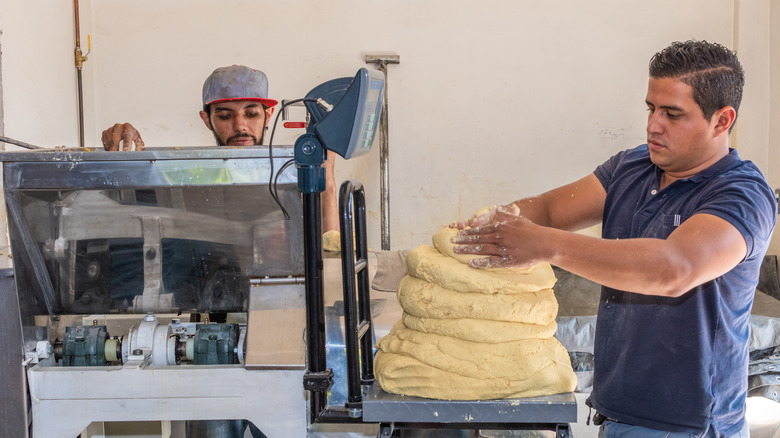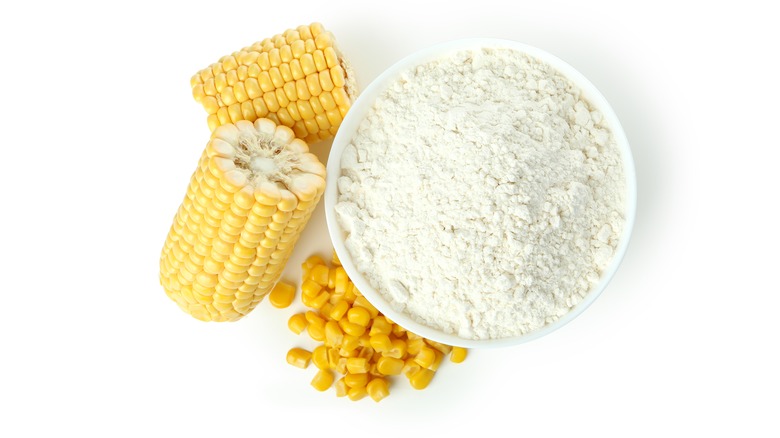Here's The Difference Between Masa And Corn Flour
Are you a fan of Mexican cuisine? It's hard not to be one because traditional Mexican food is typically vibrant, colorful, fresh, tasty, and often quite spicy, which is one of the reasons why people love it. And suppose you're visiting Mexican or Tex-Mex restaurants on a regular basis, munching on anything from guacamole and tortas to nachos and taquitos. In that case, you're familiar with the star of Mexican gastronomy –- the humble tortilla. But this is not just any regular tortilla, as Mexican tortillas are traditionally made exclusively from corn (via El Pollo Norteño).
Yes, it's corn! Corn is a base for Mexican tortillas, which are then used to make a wide variety of traditional dishes such as tacos, quesadillas, burritos, fajitas, and chimichangas. And the popularity of tortillas is so immense that Mexican people eat about 300 million corn tortillas daily, which is a staggering number (per Adama). Without corn, there would probably be no Mexican cuisine at all. The Spruce Eats reports that in Mexico, this versatile crop is most commonly used to make hominy, masa harina, cornmeal, and corn flour. And although there are differences between each of them, masa and corn flour are the ones that confuse people most of all, so let's take a look at some notable differences between these two corn products.
Masa is made from nixtamalized white corn, while corn flour is made by grinding yellow corn
You've probably already heard about corn flour, although the situation might be a bit different with masa. Are tortillas made from corn flour or masa? What are both, exactly, and how do they differ? Epicurious reports that masa harina is a type of flour dating back to the 1950s, and it's made from nixtamalized corn. If this is all Greek to you and you're wondering what is nixtamalization, it's a "traditional maize preparation process in which dried kernels are cooked and steeped in an alkaline solution, usually water and food-grade lime (calcium hydroxide)" (via International Maize and Wheat Improvement Center).
MasterClass reveals that masa harina mixed with water becomes masa, which is the base for dishes such as gorditas, pupusas, and tamales. It can also be used to thicken different stews and soups. Corn flour, on the other hand, is a powder made by grinding yellow corn. In contrast, masa is typically made from white corn that's then nixtamalized, but there are other types of masa made with blue or yellow corn.
And which came first, masa or corn flour? Well, masa is much older, dating back to the Mesoamericans. In the end, let's say that both masa and corn flour are great products -– use corn flour just like you would regular flour, and use masa to make delicious tortillas, or try your hand at making traditional Venezuelan corn cakes called arepas.

